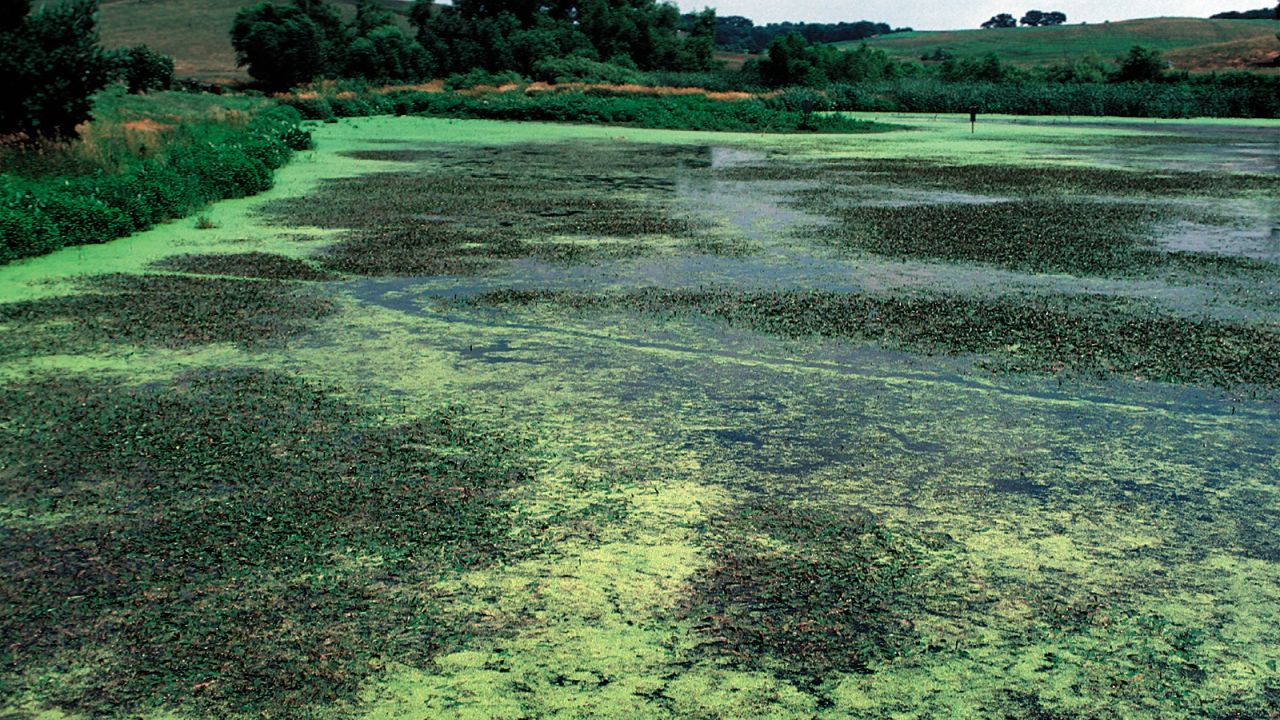
We’ve all heard of pink slime. Now, there’s green slime too.
Unregulated pollution from farm fields is triggering slimy green blooms of algae around the globe, according to National Geographic. Its story documents how fertilizers that wash off farm fields feed massive growth of algae, setting off chemical chain reactions that create low-oxygen “dead zones” where fish and other aquatic life cannot survive.
Although the Gulf of Mexico’s “hypoxia” is among the most notorious dead zones, many of America’s rivers, lakes and bays suffer from the effects of fertilizer pollution streaming from farm fields.
In recent weeks, one giant algae bloom scarred the surface of Lake Erie. Every year, Chesapeake Bay suffers from a dead zone caused by polluted runoff. In some cases, certain kinds of algae blooms are a danger to people and pets.
And green slime isn’t the only threat that results from fertilizer runoff. A recent study found that nutrient pollution was fouling drinking water in California. And the EPA calls polluted runoff from farm fields one of the leading threats to drinking water supplies all across the country, threatening public health and driving up water treatment costs. EWG’s own recent study found that removing nitrate alone from drinking water costs utilities nearly $5 billion a year.
Many farmers are taking steps to use fertilizer with greater care, but most of the farmers who seek help from USDA for their conservation efforts get turned away due a lack of funding.
In recent years, Congress has cut funding for voluntary conservation programs such as USDA’s Environmental Quality Incentives Program (EQIP) and Conservation Stewardship Program (CSP), which provide incentives for better management of fertilizers. What’s more, Congress has cut funding for programs to install buffer zones and wetlands that can help catch and filter polluted runoff.
Now the House and Senate Agriculture Committees are proposing to cut EQIP, CSP and similar programs even more in the 2013 farm bill in order to help pay for lavish new subsidies for the largest and most successful farm businesses.
A better course would be to place reasonable limits on who can receive crop insurance subsidies and how much they can collect. These common-sense reforms would create a level playing field for family farmers and help protect public health and the environment.



